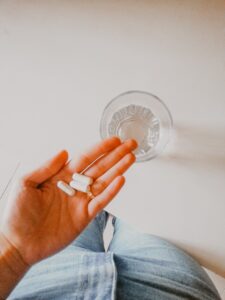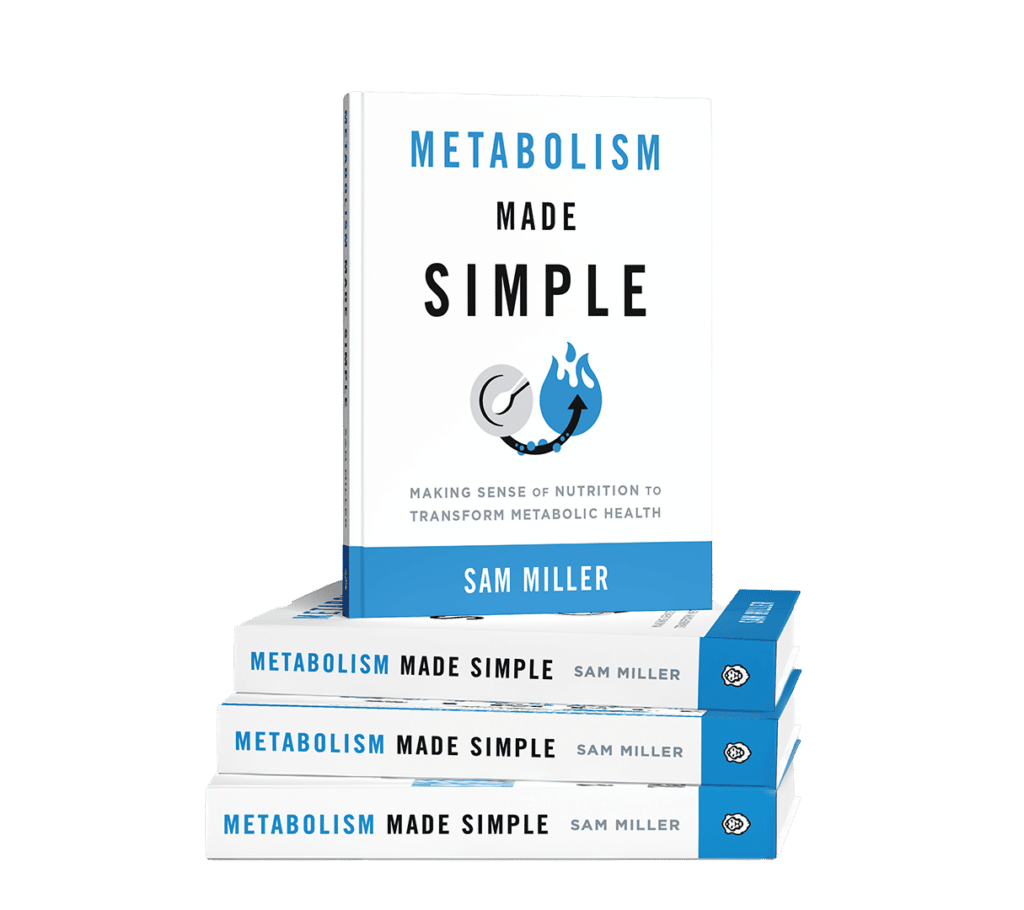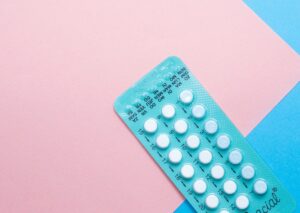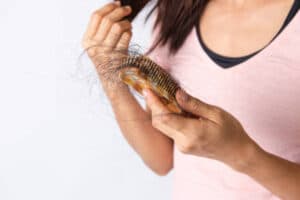As a fitness coach, you’ve probably been in a scenario where your client comes to you needing to eat more food in order to fulfill whatever ultimate goal they have.
Maybe they need to reverse from the end of a dieting phase in which they got really lean. Maybe they’re not particularly lean but have been chronically dieting. Maybe they’re just in an active muscle growth phase and need to increase their caloric intake.
For many clients, especially lifestyle clients in which the thought of “eating more for fitness” has never crossed their mind, this can be hard.
In individuals who have been eating a very low-calorie diet for quite some time, you often find their hunger signals suppressed. Getting these folks to actually adhere to a reverse diet can be tough, and not just from a mental perspective, many times, clients even struggle to eat more food from a physical perspective.
This post is about how to improve reverse dieting adherence for clients who simply aren’t hungry enough to get the food in.
Table of Contents
What is a Reverse Diet?
As a fitness coach, you’re most likely familiar with reverse dieting, but just in case you aren’t, I’ll first explain what a reverse diet is and why you or your client want to do one.
A reverse diet refers to a structured process of slowly increasing calorie intake after a period of being in a calorie deficit or dieting. It involves slowly increasing the amount of food consumed, primarily in the form of carbohydrates and fats, while closely monitoring the body’s response and making adjustments as needed.
The goal of a reverse diet is to restore the body’s metabolic rate, improve hormonal balance, and minimize weight regain (and specifically fat gain) that can occur after a prolonged period of calorie restriction.
You can now see why reverse dieting may be a mental challenge for your clients.
They may be used to functioning on fewer calories and are now worried that they’ll gain body fat as soon as they start eating more food — or they may be worried they’ll fall back into old eating habits.
But the issue of a lack of hunger may be a bit more challenging for you to navigate with your client, so let’s discuss why low hunger might be happening in the first place.

Why Am I Not Hungry?
Let’s take a look at the case of someone who is not lean but has been yo-yo dieting for years. Perhaps you or your client were on a calorie-restrictive diet where the majority of the week, they’d be eating 1,200 calories, but felt that it was so restrictive that they had a symptom eruption and would binge most weekends.
Perhaps they didn’t necessarily gain weight, but they maintained their weight. The majority of days, their body is used to eating a lower calorie amount and thus, their hunger homeostasis gets brought down to where they normally eat over time (1,200 calories in this example).
Let’s take a look at a different case: Someone who is very lean and is used to being very lean and is stuck in a calorie hole with no hunger signals. There could potentially be a little ghrelin resistance going on. Remember, ghrelin is the primary hormone responsible for giving hunger pangs.
When you’re very lean, ghrelin levels are going to be very high fairly constantly, so we may see a resistance to its effects just as we see resistance to many different hormones that become chronically high.
The good thing is, it seems that once you get over a certain hump of increasing calories through reverse dieting, this resistance reverses rather fast.
I should say ghrelin resistance hasn’t been confirmed in the above population, however, it has been in others. Studies that really see ghrelin resistance are generally in cases of anorexia nervosa (it’s not particularly easy to get funding for a study on super lean and otherwise healthy “fitness freaks”). Individuals with eating disorders like anorexia nervosa have been confirmed to experience ghrelin resistance.
Again, once the reverse dieting process begins, this resistance dissipates rather fast.
How to Stick to a Reverse Diet
Reverse dieting can be tricky, so here are nine tips to help you or your client better adhere to a reverse diet when you don’t have much of an appetite.
- Increase the Macronutrient Density of Food and Reduce Food Volume
There are a few different ways you can consume more calories while maximizing your nutrient density and reducing the volume of your food. How many calories you consume will be based on how many of these you implement.
Consume More Liquid Calories
Liquid calories that contain some nutrient density are always an easy way to increase calories.
Smoothies are a great way to easily get more calories while getting more nutrients. Including more calorie-dense things in your smoothies, such as oats, sweet potato, avocado, a little peanut butter, greek yogurt, cottage cheese (if you are not dairy intolerant), along with protein powder, would be an easy way to get a higher calorie meal relatively quickly.
Although smoothies tend to make you feel full rather fast, they also clear your digestive system rather fast, resulting in you getting hungry earlier or, at least, feeling like you’re not full.
Eat Less Fibrous Vegetables and More Calorie-Dense Starches
If someone is used to having an extensive amount of their carbohydrate intake come from fibrous vegetables, such as if they just ended a diet phase, or maybe if they’re just of the belief that starchy carbohydrates are bad for your health or body composition, then reducing the amount of fibrous vegetables they eat can really decrease satiety and help them consume more calories.
Don’t interpret this as an extreme, though; I’m not recommending that you totally remove fiber from your diet during a reverse diet phase. Ensuring you or your client is still getting a solid 25–30 g, or 14g per 1000 calories a day would still be appropriate to maintain your weight and overall health.
If we’re bringing down fibrous vegetable intake, it follows that we replace those with easier-to-digest, starchy carbohydrate sources like white rice, white potatoes, sweet potatoes, fruit, etc. A good tactic would be to make the pre- and post-workout meals devoid of fiber or low fiber.
Who wants a bunch of fiber to make them feel full right before they’re working out anyway? Post-workout, you’ll be able to take advantage of a fast-digesting meal from an insulin-sensitivity standpoint, which will help your reverse dieting efforts.
Eat More Ground meats
Another fan favorite while reverse dieting is to increase how much ground meat you’re eating.
Ground meats are another way to increase the digestion speed of meals since grinding meat takes care of some of what your teeth would normally do, and if you’re eating a steak, there’s a larger chance those bites will reach your stomach less broken down than ground meat, resulting in the protein staying in your stomach for longer.
Make Your Food Taste Good
When dieting to lose fat, some people like to use the tactic of making their food not quite as palatable as it’s less of an incentive to over-eat. We can use the opposite tactic during a reverse dieting phase.
When you’re reverse dieting, I encourage you to use salt, herbs, and spices liberally. This will help you increase your calorie intake and actually enjoy your meals without hyper-focusing on fat gain, which, if you’re reverse dieting correctly, shouldn’t be a major issue anyway.
You should also split your macros equally between meals when you’re reverse dieting so you can get some fat, carbs, and protein in each of your meals. The combination of fat and carbs is palatable, so combining these two at each meal (within your macro allowance) will be your best bet to make tastier meals.
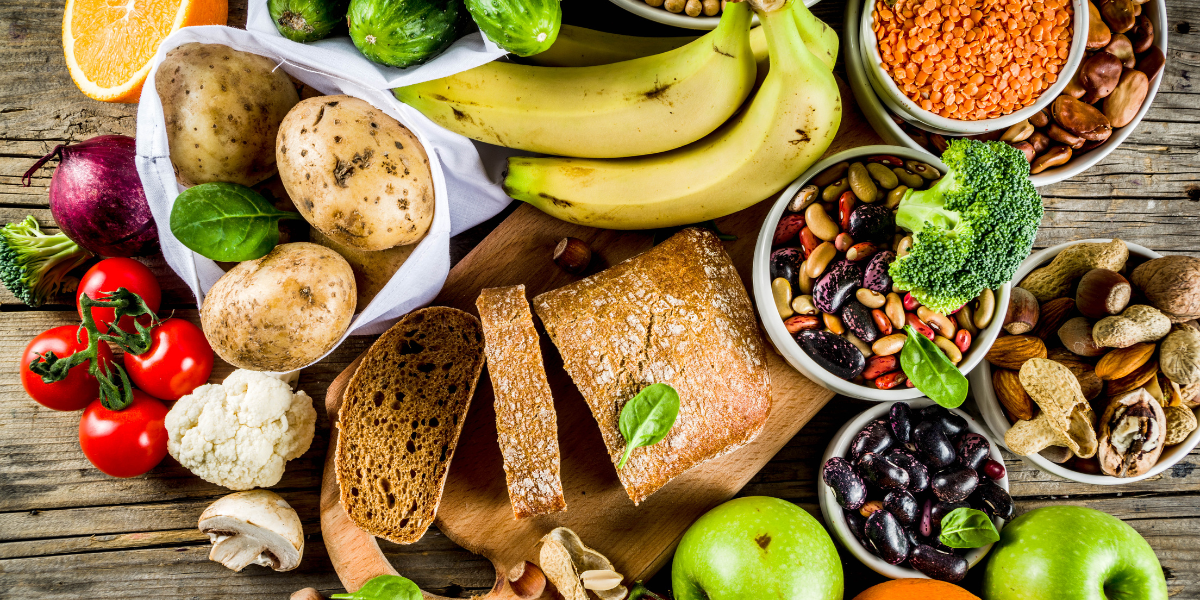
- Eat More Carbs and Less Fat
Incorporating higher GI carbohydrates is a great way to stoke hunger in an insulin-sensitive individual who is looking to reverse diet. In most cases, those who need a reverse diet are going to be more insulin sensitive just from the fact that they’ve been under-eating for so long.
Carbohydrates raise leptin and insulin, which acutely act as a satiety signal after a meal. However, long term, in healthy individuals, these hormones, particularly leptin, also raise energy expenditure, which will result in more frequent hunger. The mild blood sugar drop that occurs an hour or two after a carbohydrate-rich meal may also trigger hunger signals and therefore help you eat more calories throughout the day.
- Reduce Stress
People have variable responses to stress. In some folks, stress triggers them to eat more, but stress can also have an appetite suppressant effect, which can be particularly annoying when reverse dieting. There’s also the typical cycle of having stress suppress your appetite for healthier, whole foods and driving your appetite for hyper-palatable foods, which can make maintaining weight loss a challenge.
Sympathetic nervous system (fight or flight) activation, in general, can be quite an appetite suppressive as well.
Managing stress shouldn’t just be a concern when reverse dieting. You should be aiming to manage stress during every phase of your life because it impacts a lot more than just body fat. Read this blog post for more details.
Practice Stress Reduction Techniques
All the ones we preach for general lifestyle stress: meditation, breathwork, walks, time in nature, art, music, time with pets and loved ones, etc. If you want a full run-down on managing stress, listen to this podcast episode.
For a few more precise tips, having a high GI carbohydrate meal post-workout can quench sympathetic nervous system activation and lower cortisol a bit.
You can also take Pomodoro-style 5-15 minute work breaks throughout the day if that’s an option for you, and do something that completely gets work out of your head (e.g., go for a walk, listen to a podcast, read a book, etc.).
Another way to help reduce stress while reverse dieting is to incorporate stress reduction supplements like Ashwagandha and other adaptogens, CBD, phosphatidylserine, etc.
Decrease Stimulant Use
Stimulants increase sympathetic nervous system activation, which, when overdriven, almost always has an appetite suppressant effect and makes reverse dieting more difficult. Decrease coffee, tea, energy drinks, pre-workout supplements, etc., if you take quite a bit.
Modulate Workout Intensity and Frequency
If someone has a heavier psychological stress load and is also working out rather intensely 5-6x a week, their sympathetic nervous system activation is probably going to be in overdrive. Reducing the overall stress load can help alleviate this, and this includes training stress.
You can check morning heart rate variability (HRV) for chronic sympathetic nervous system activation. People may know HRV as a measure of recovery, but what it’s actually measuring is the degree of sympathetic nervous system activation. If someone has a consistently low HRV compared to where they normally are in a time of low stress, then this could be a reason for low hunger.
It’s important to do this first thing upon waking prior to getting out of bed, as we want to avoid any stimulating activity that may activate the sympathetic nervous system. The idea is that we want to see how “on” our nervous system is without any external influence.
- Assess Gut Health
Getting full quickly can also be from either too high or too low stomach acid. You may have run across a client that says they feel full after 5-6 bites of food or a very small meal. This is usually accompanied by other gut symptoms like GERD, constipation, diarrhea, bloating, and gas, so reverse dieting may be especially challenging for them.
Do an assessment of their gut health and ask questions about their bloating, gas, bowel movements, etc. It’s important to ask specific questions here since just asking, “How’s your digestion?” won’t get you a lot of details. Most people don’t volunteer a lot of toilet talk. If there are issues there, then it might be prudent to address those before beginning a full reverse diet or weight gain phase.
Gut issues don’t necessarily mean you have to eliminate food. If someone’s diet has a lot of low-hanging fruit, meaning a lot of processed and packaged food with low micronutrient density and a paltry amount of fiber per day, then simply encouraging a balanced diet by increasing food quality and fiber a bit may help mild digestive issues.
In other cases, such as someone mostly eating whole foods with a good amount of fiber already, we might be looking at an elimination diet or a full gut protocol.
- Space Meals Frequently and Evenly and Avoid Intermittent Fasting
Intermittent fasting, for many people, works wonderfully during a cut, and ends up lowering hunger levels and leads to a lower calorie intake. While some individuals who intermittently fast may lose weight, others may end up in a restrict-binge cycle, which also isn’t ideal for a reverse diet, let alone food mindset.
Spacing food evenly throughout the day and having slightly more frequent meals (this can be as simple as adding one extra meal to their daily routine or one meal and one snack) can help this, especially if each meal contains some starchy carbohydrates combined with fats.
- Take Reverse Diet Breaks
If someone’s hunger hasn’t been stoked yet from all the other tips, sometimes after a while into a reverse diet, clients can become mentally spent and adherence gets even worse.
Just like you may take regular diet breaks during an extended weight loss phase or when trying to get extremely lean, taking 1–2 weeks at a slightly lower calorie level than what you had them target during the reverse process might help.
- Include More “Free” Meals Than You Would in a Diet Phase
You probably don’t encourage your client to have “free” or unrestricted meals too often during a diet phase, but when reverse dieting, these meals could actually help them reach their body composition goals.
Perhaps once or twice a week, encourage your client to go eat out or not care too much about what they’re consuming at a family function or dinner with friends. When I do this with my clients, in order to prevent going WAY over calories, I still tell them to moderate to the best of their ability with portion size since most restaurant food is very rich with hidden calories, and going overboard would cause unwanted weight gain. Even if they’re consciously moderating, they’re still going to get more calories than they normally would.
I’ve noticed that this can stoke hunger in the days following, allowing them to eat more of the quality food that is back within their regular lifestyle/plan.
- Limit Liquids with Meals
Besides your morning hydration, limit the liquids that you drink with your meal or within the 30 minutes before. Save drinking for after meals.
Many studies on appetite management show that “loading” or drinking a significant amount of water/liquid before a meal does decrease calorie intake at that meal.
Don’t consciously consume significant amounts of liquid in the time before a meal or with it. Of course, if you’re parched and incredibly thirsty, listen to your body, but if not, save the liquids for after meals.
- Change Meal Environment or Speed
These tips are basically going to be the opposite of what you’d do in a dieting phase. During the calorie deficit phase, we want to create more awareness around food because mindfulness around eating is an important aspect of weight loss.
However, this works in the opposite direction as well and we can create slightly less awareness around food. The only danger here is your client making this a habit that would be hard to break during a diet phase. It’s important to frame why we’re doing this with the client so they understand it’s only a short-term intervention.
Tactics would include all the things that you’ve heard people shouldn’t do in most circumstances, such as watching your favorite show while eating.
If you or your client is normally a very slow eater, try speeding up the rate at which you eat (keeping in mind to still chew your food enough). Studies show that eating a meal slowly (one study compared 6 minutes vs. 24 minutes) will keep ghrelin, and therefore hunger, suppressed for longer.
You can also trick your brain with a larger plate. Perception of food does play into satiety and intake. This is called the plate-size effect in research and has many studies backing it. The research suggests that putting food on a smaller plate increases satiety and lowers intake. If you put your food on a larger plate, it will look like a smaller amount of food compared to the plate and result in a higher calorie intake.
Reverse Dieting Made Easier
I hope this has been helpful and has given you a few more tools to use in helping your clients complete their reverse diet. Clients will only get results as long as they can adhere to and comply with the process, assuming that a reverse diet was the right thing for them.
Reverse dieting does tend to be over-used in the fitness space due to its popularity at the time of writing this. If you haven’t already, I’d encourage you to check out this post, where I go in-depth on when reverse dieting might not be a good idea for your clients.
If you want to uplevel your coaching game overall to become head and shoulders above 95% of coaches in this saturated space, you should also check out the Functional Nutrition and Metabolism Specialization program.




